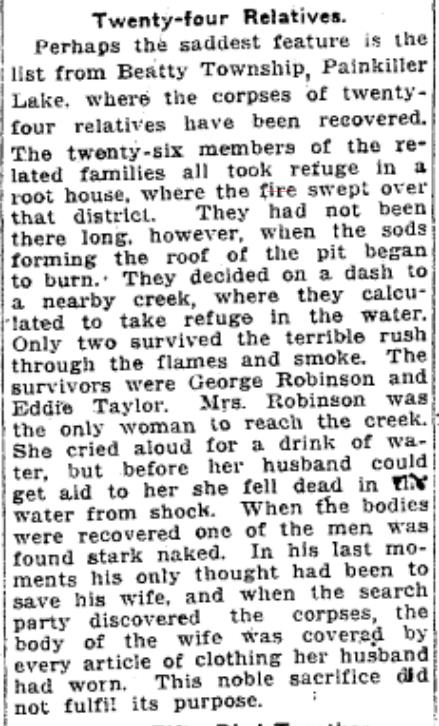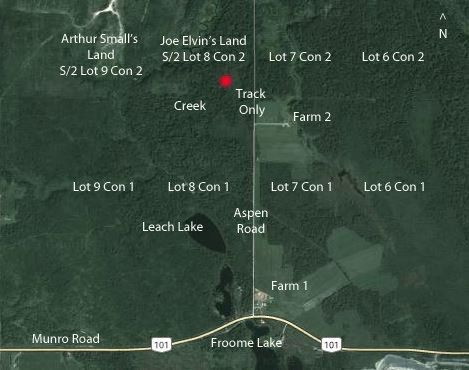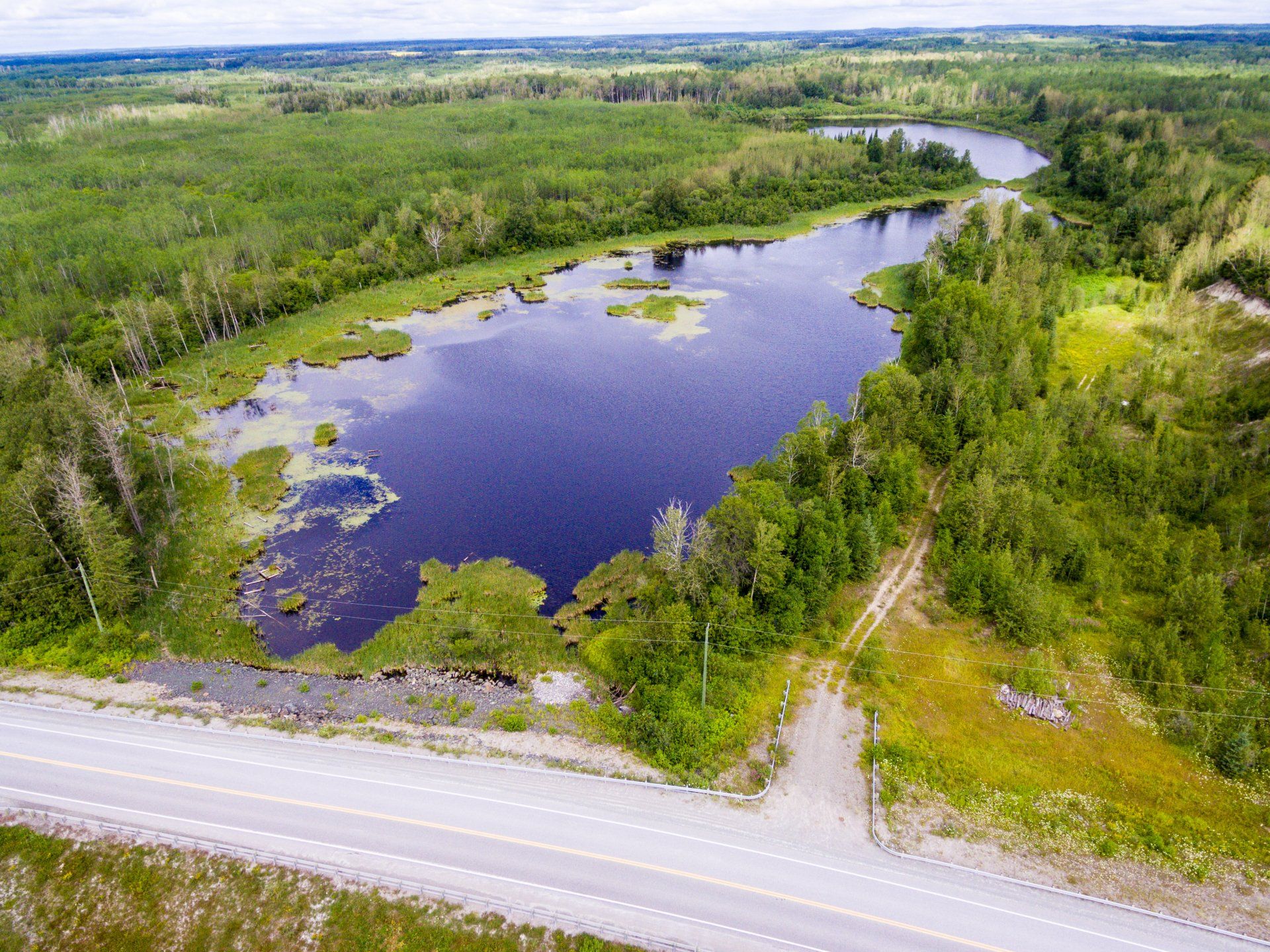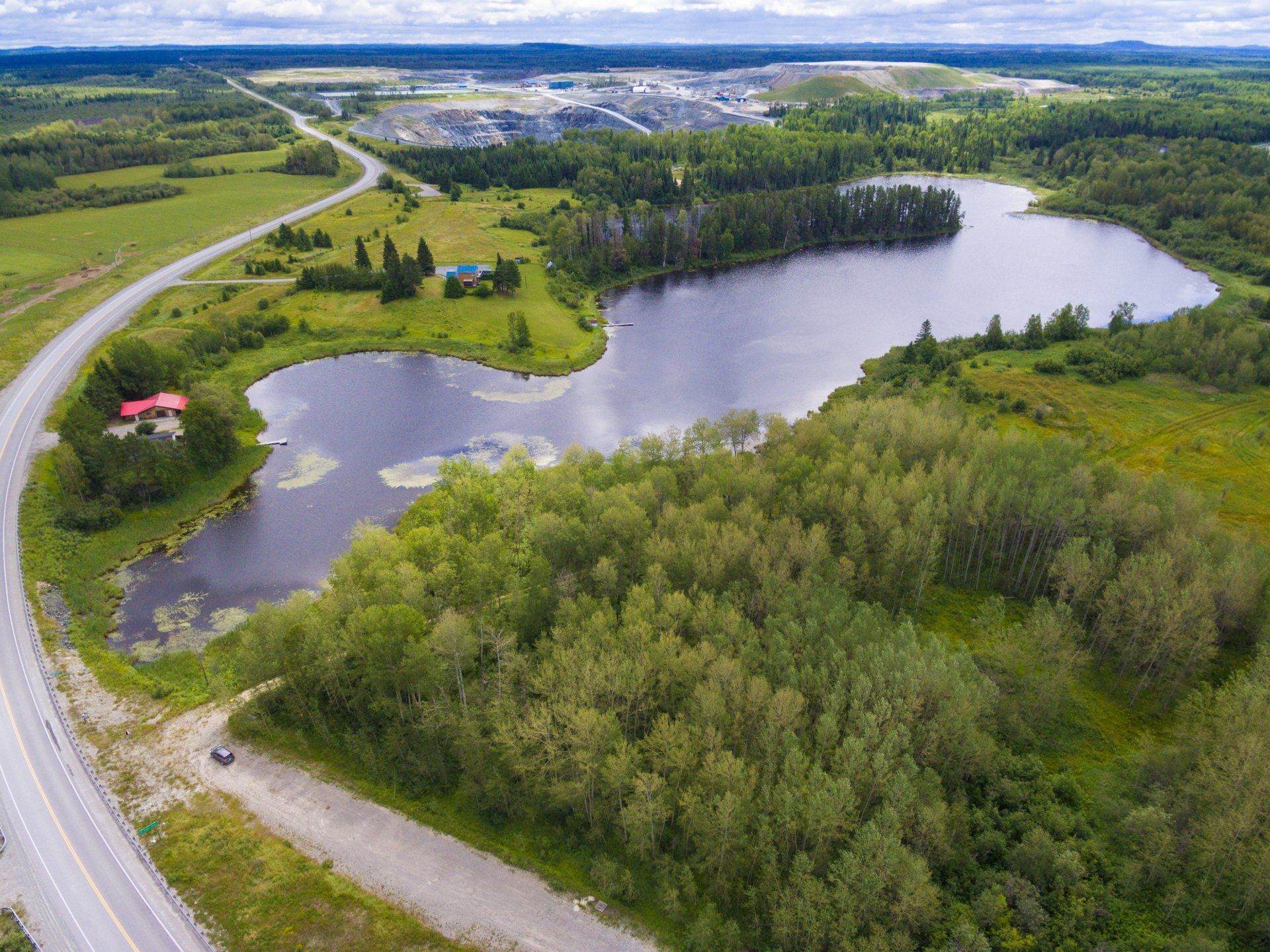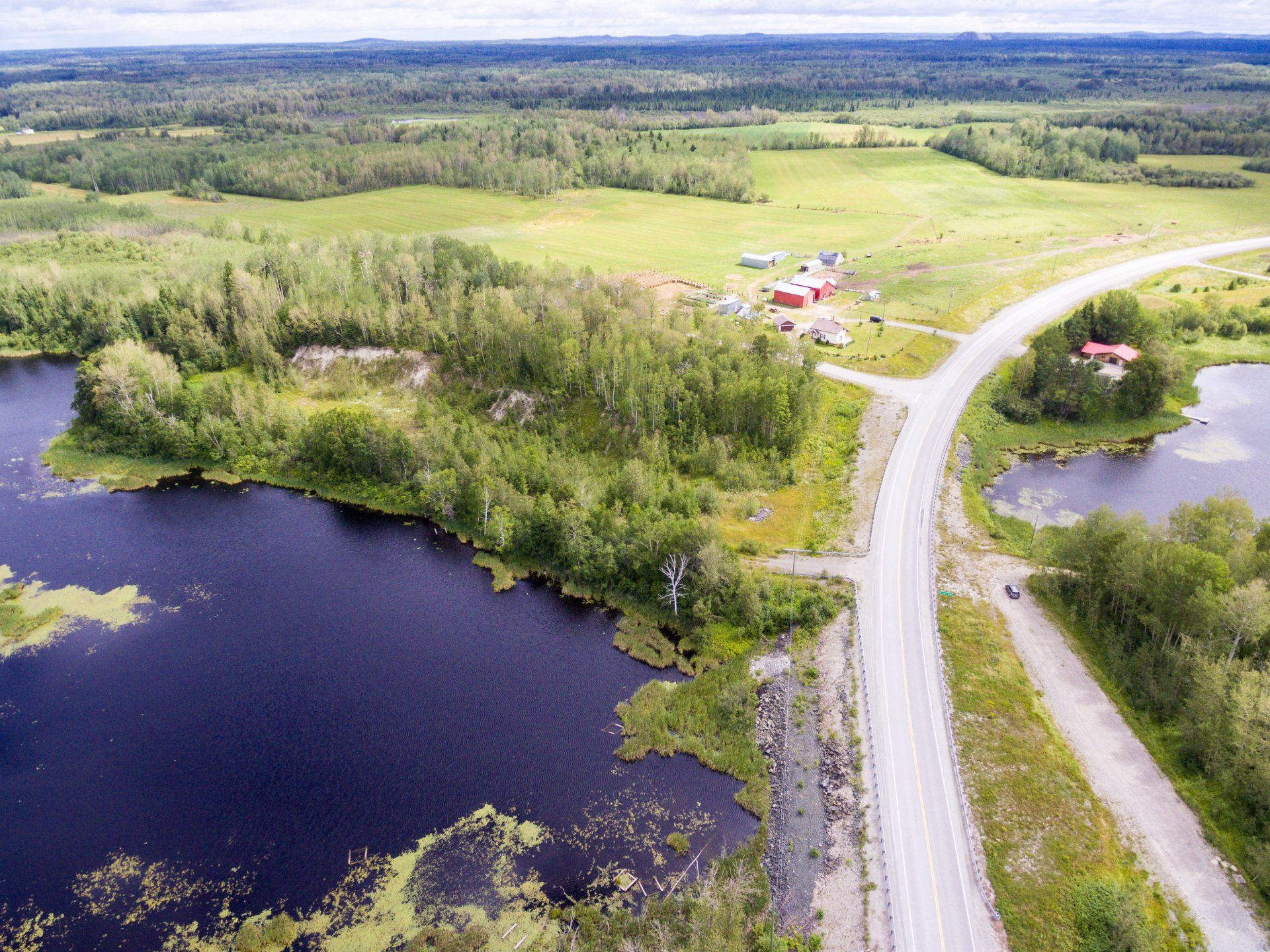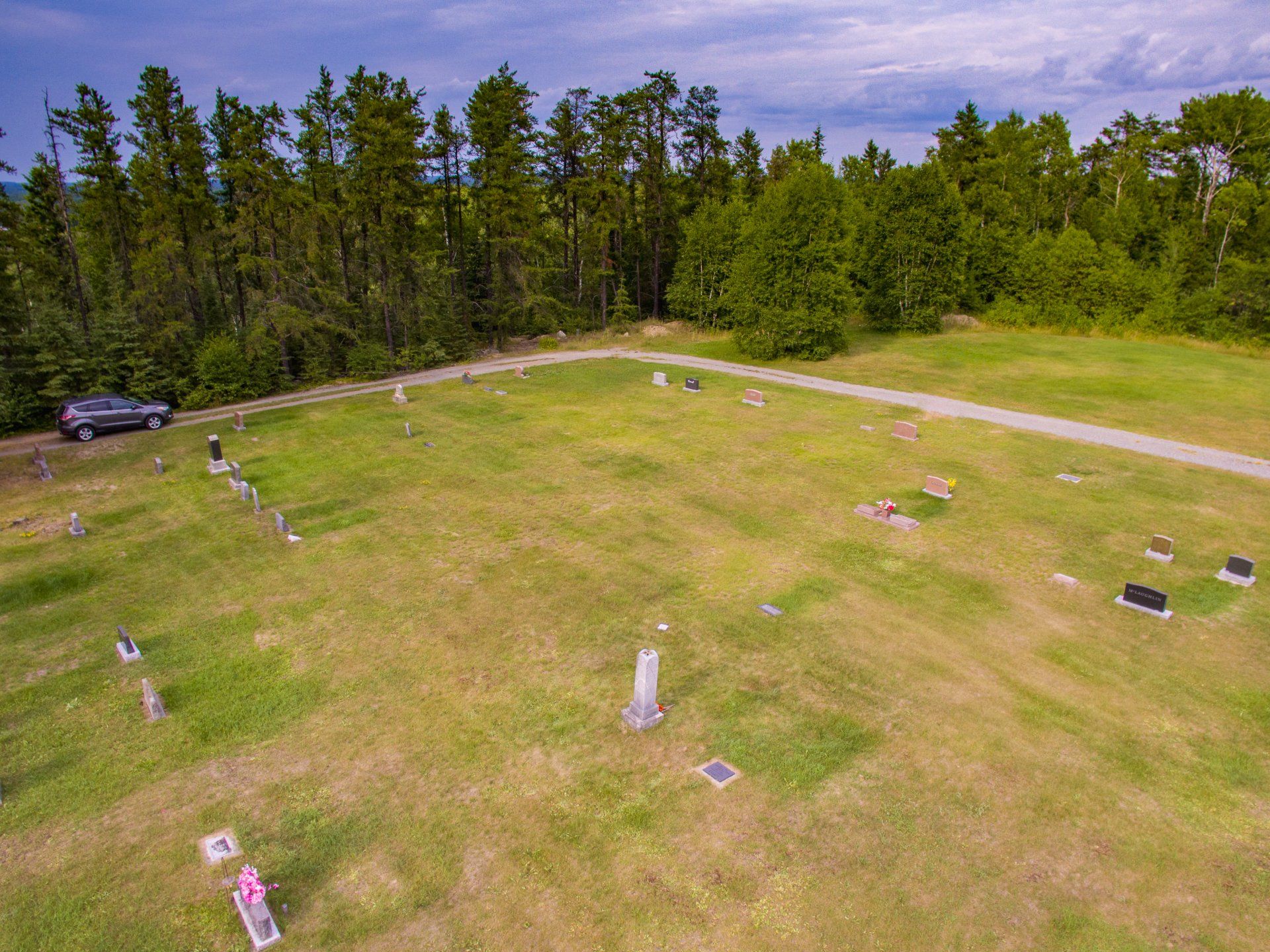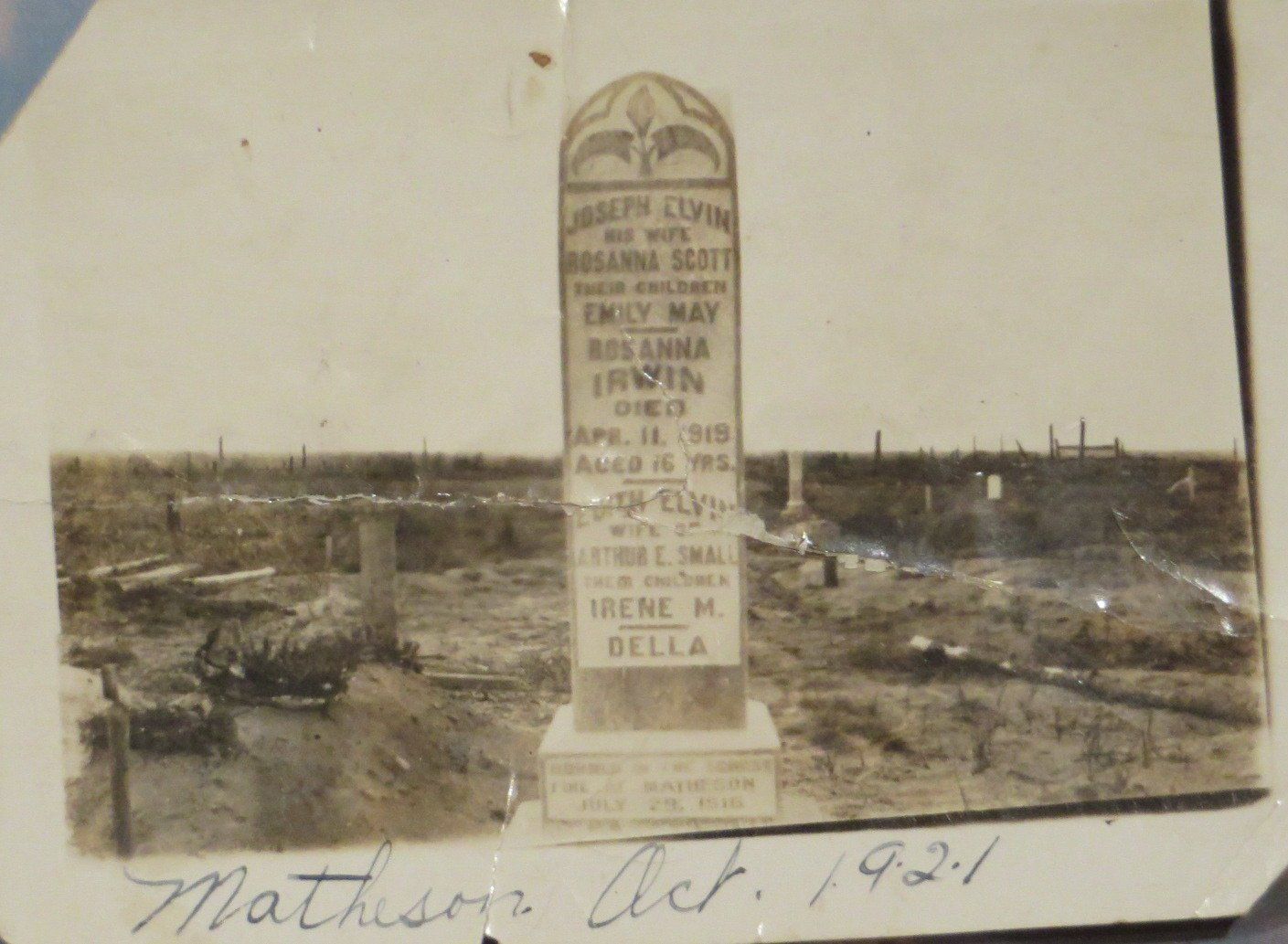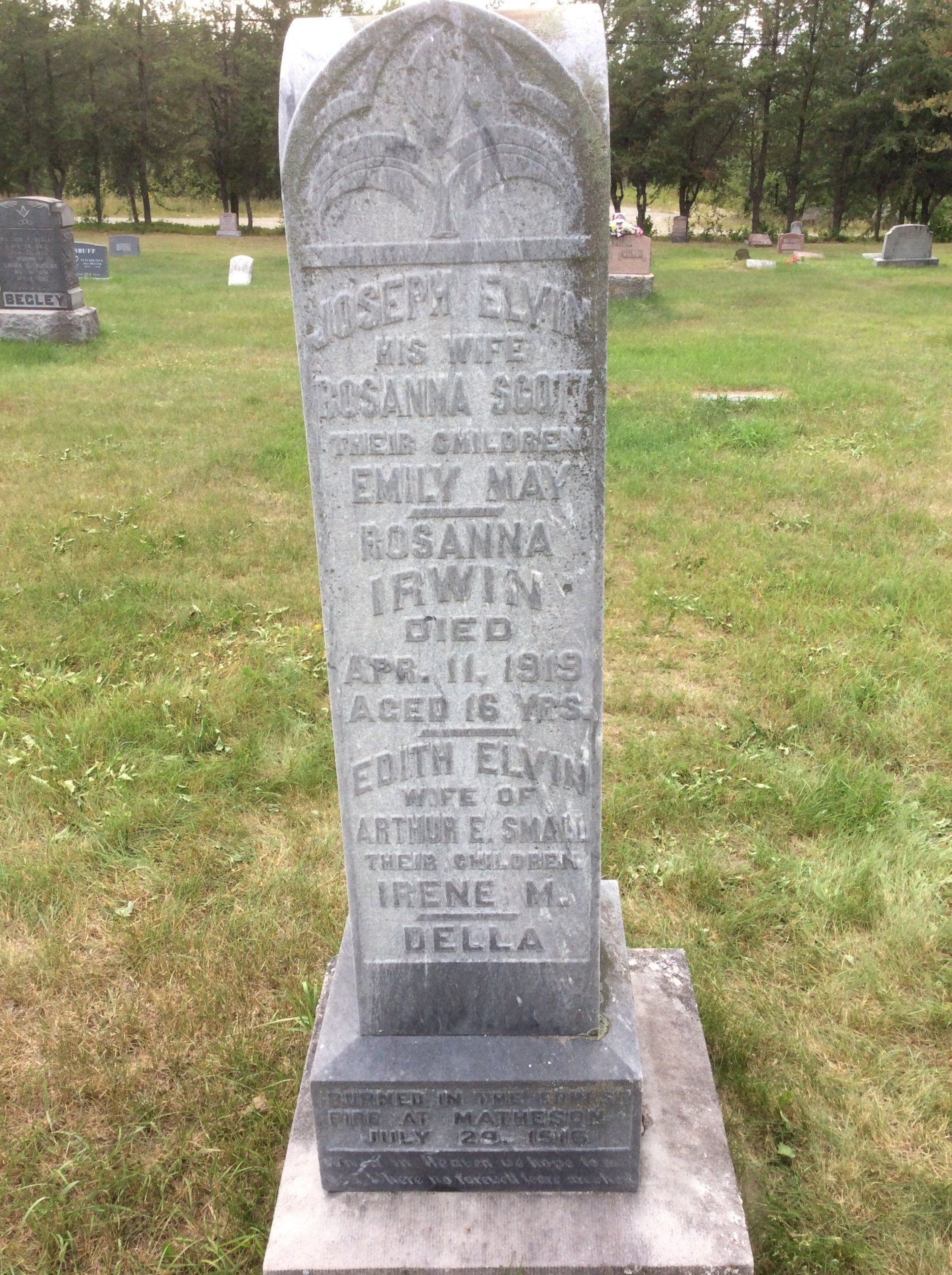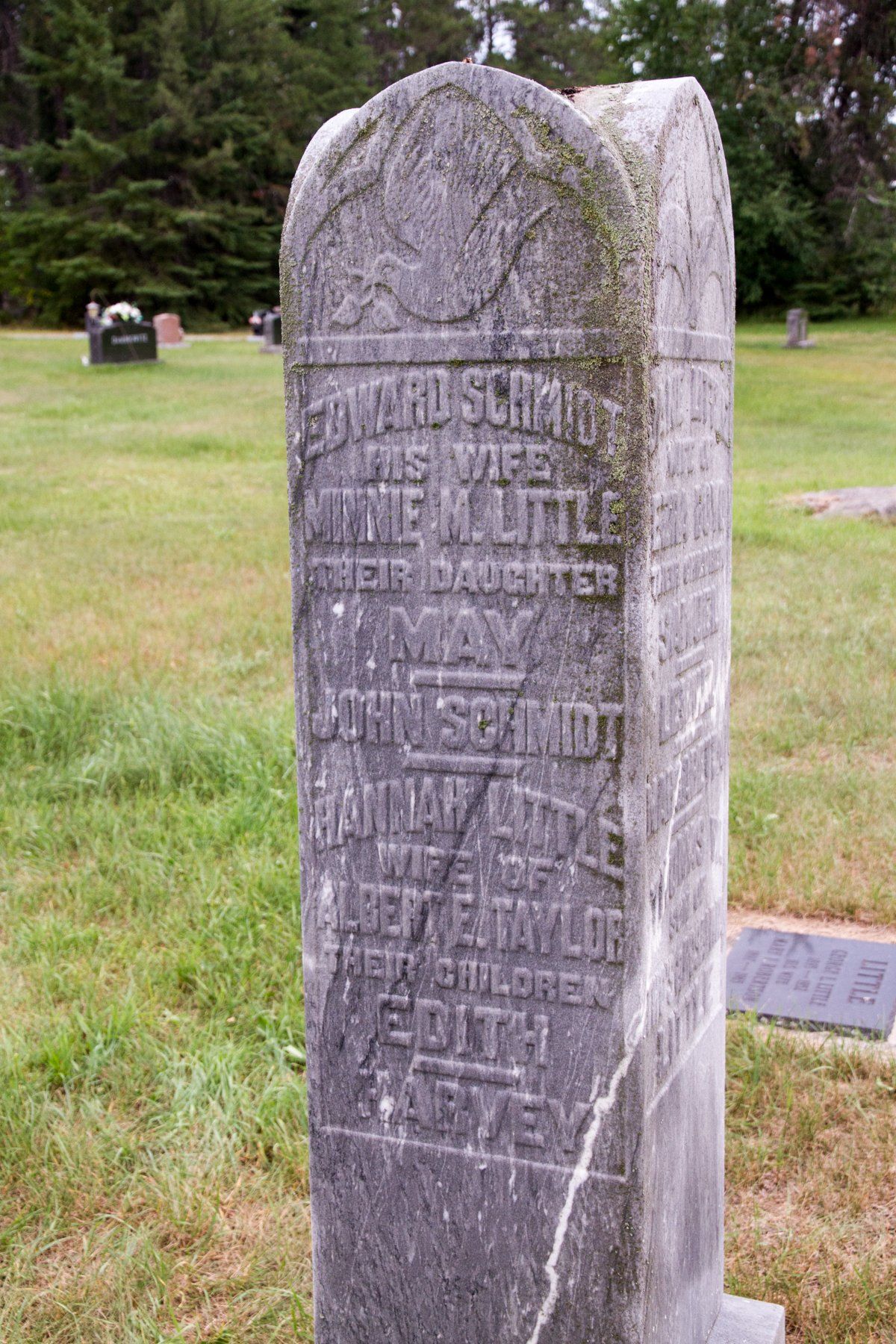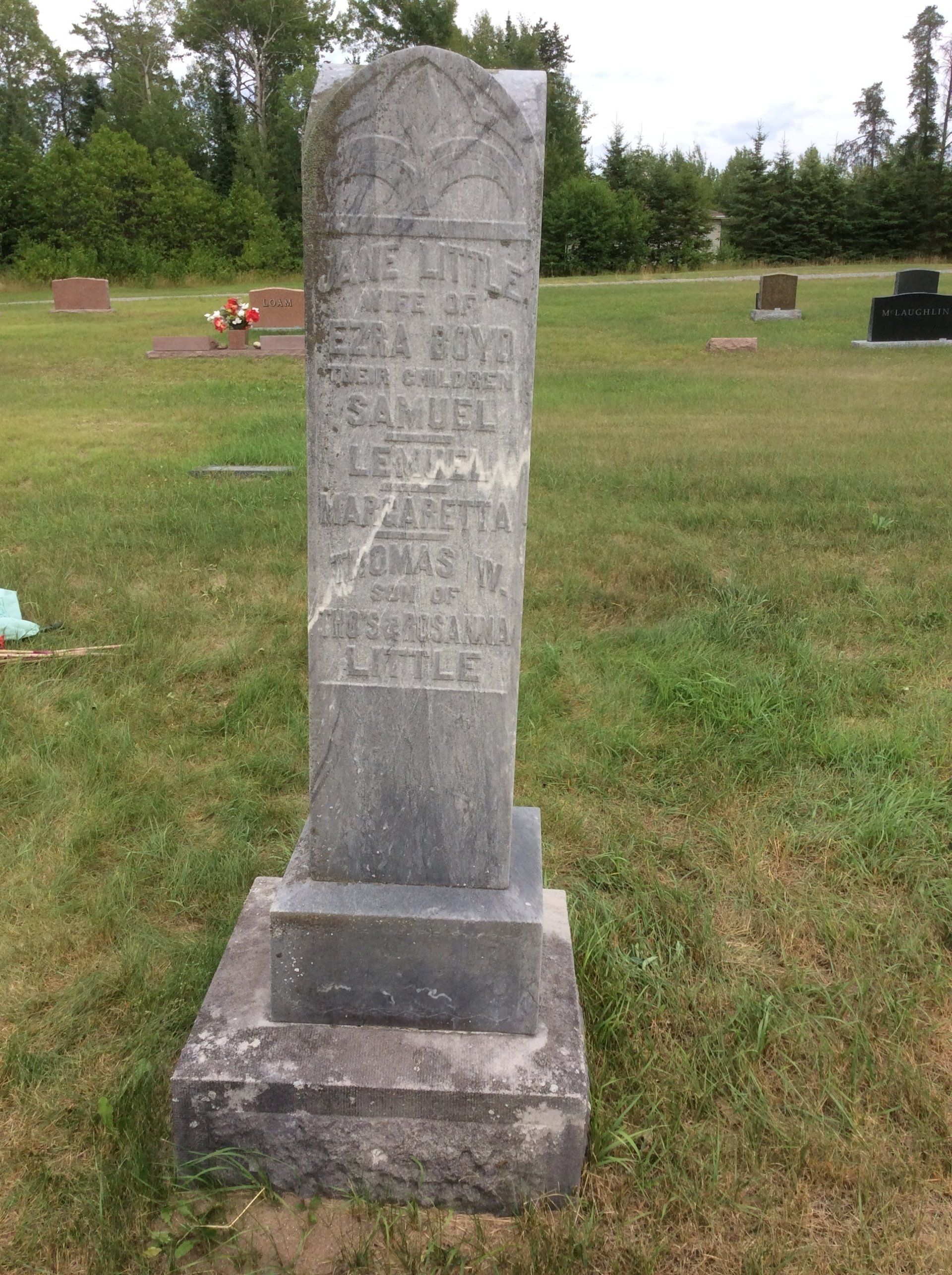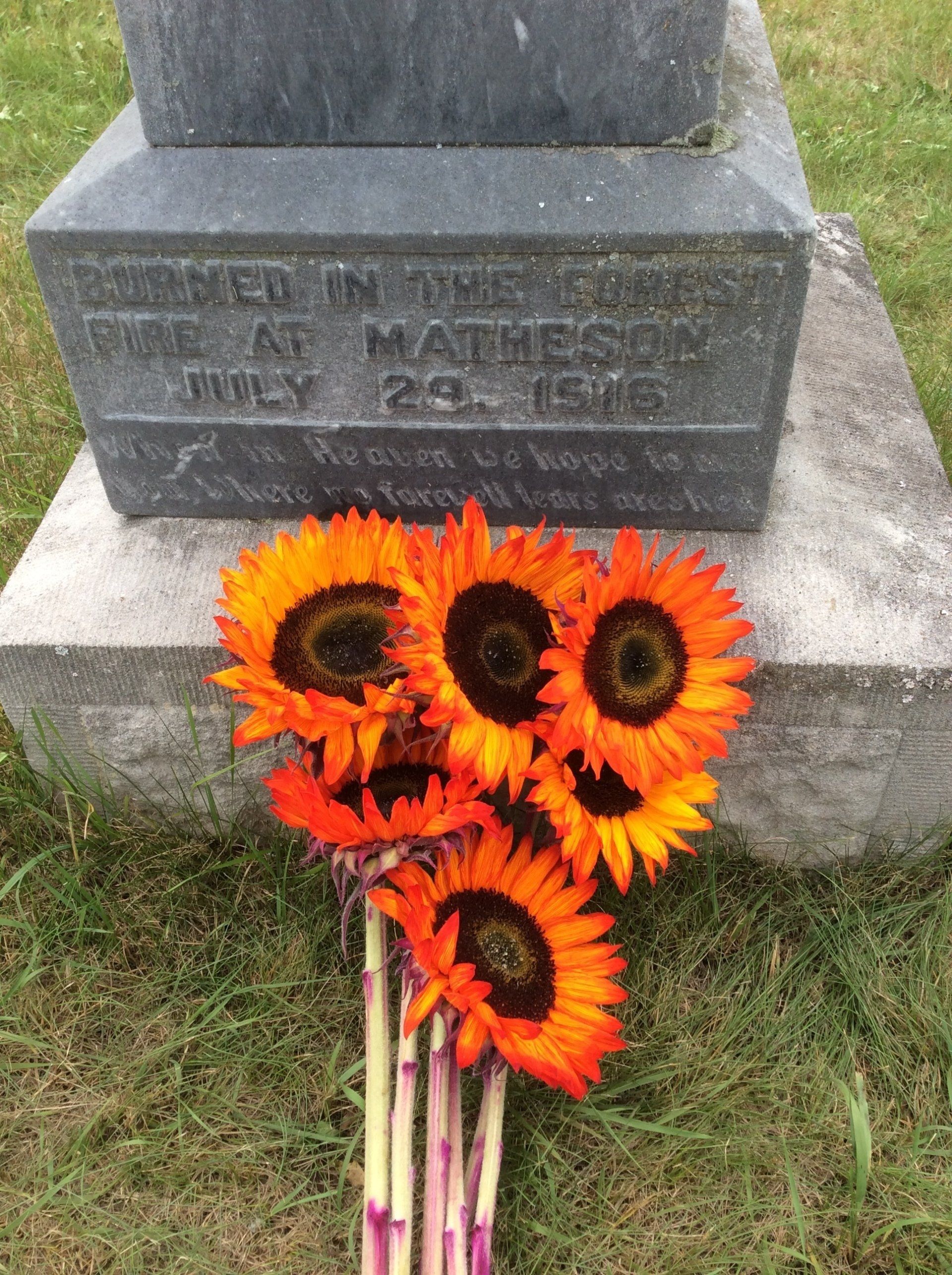The Matheson Fire - 1916
On July 29, 1916, small fires which had been burning for weeks around homesteads along the Temiskaming and Northern Ontario Railway were united by strong winds into one gigantic firestorm. Known thereafter as the Matheson Fire , it ravaged the communities of Porquis Junction, Iroquois Falls, Kelso, Nushka, Matheson, and Ramore. Over 223 people perished in this fire, including twenty-four members of my extended family.
Joseph Elvin, married to my great great aunt, Sarah Rosanna "Rose" Scott, was the first in our family to head to Northern Ontario in search of land on which to homestead. He bought the south half of Lot 8 Concession 2 in Beatty Township, Timiskiming District on October 31, 1912. His eldest son, Olimer (Ollie), bought the north half of Lot 7 Concession 2 on the same date. Each lot was 161 acres in size.
Beatty Township is east of the town of Matheson. Originally a fur trading post called McDougall Chutes, the town of Matheson was laid out as a manufacturing centre in 1907 and incorporated March 2, 1912. It was named after Colonel Matheson, the Provincial Treasurer for the Conservative Government at the time.
The Elvins had been living in Bracebridge until at least April 16, 1909, when their youngest daughter, Rosanna, was born. I have been unable to locate the family on the 1911 Census and presume that they had already left for the north when the census was taken. It is possible that Ezra Boyd, the husband of Rose’s cousin, Eliza "Jane" Little, had also gone north to help with the homestead building as he was not on the 1911 census either. His wife, Jane, and their children, Samuel, Ruby and Lemuel, were located on Dill Street in Bracebridge living with Jane’s parents, Thomas and Rosanna Little.
I did find Ollie Elvin on the 1911 census living in Oakley Township, Muskoka District, with his sister Edith, her husband, Arthur Small, and their young daughter, Edith Irene. It is possible that Ollie had stayed with his sister to help her move as soon as her next expected child was born.
After the birth of son Clarence Edward, on May 7, 1912, the Smalls moved north to join the rest of the Elvins. It appears as though this small contingent of settlers was the first from our family to make their homesteads in Beatty Township. I believe that Ollie likely was working with his family on their homestead rather than working on his own land prior to 1916.
Soon after the Elvin family headed north, they were followed by their cousins, the Littles, in 1914. Thomas Little’s wife, Rosanna Scott, was a sister to Lemuel Scott who was Rose (Scott) Elvin’s father. Rosanna (Scott) Little was Rose Elvin's aunt and so the Little offspring were Rose Elvin's first cousins. Not all of Thomas and Rosanna’s children headed north with their parents. Their eldest son, Samuel Francis Power Little, had married his first cousin, Mary Louisa Scott, younger sister of Rose (Scott) Elvin in 1905 and they lived in Toronto. Two other children, Margaret and David, had passed away by 1910.
Saturday, July 29, 1916 was a typical summer’s day in Beatty Township. The smoke and smell of bush fires hung in the air, but it was a usual occurrence that summer and was at first no cause for concern. According to various sources, the Taylors were visiting with the Boyds who were living with the Robinsons. This does make sense as I did not locate any land belonging to either Edward Albert Taylor or Ezra Boyd in 1916.
Thomas and Rosanna Little were visiting in Bracebridge, probably at the home of Lemuel and Lucy Scott (my great great grandparents) as Lemuel was Rosanna’s brother. I believe that they likely had four of the Taylor children, Delia Rose Anna, Albert Edward, Thomas Samuel and George Lemuel, with them as these children did not perish with their mother, Hannah Elizabeth Grew Little, and siblings nine-year-old Harvey and six-year-old Edith.
At some point that morning, the wind blew stronger, the smoke grew thicker and the flames became all too visible in the distance. The Robinson, Boyd, Taylor, Schmidt and Small families grew concerned and decided to head for the Elvin farm, the earliest and most established homestead. Twenty-nine members of my extended family made their way to a sod-covered root cellar on that property. I believe that the women and children took shelter inside while the men likely tried to protect the sod hut from the outside. When the grass atop the root cellar caught fire, the men gathered the women and children from the cellar and ran blindly for the nearby creek, some 182 metres away. Sadly, only five of the men made it – George Little, his brothers-in-law Ezra Boyd, Edward Robinson, Edward Albert Taylor and his cousin Edith’s husband, Arthur Small.
A newspaper article confirmed that George Little, Edward Robinson and Arthur Small were treated in Providence General Hospital in Haileybury. I presume the other two men were treated there as well for burns, smoke inhalation and other wounds. That may explain why it was left to nineteen-year-old Lemuel Elvin, middle son of Joe and Rose, to identify and be the informant for the death registrations for most members of his extended family.
As for the woman whose husband had taken off all his clothing to protect her (Twenty-four Relatives), there are only two possibilities, Joseph Elvin and Rose Scott Elvin and Edward Schmidt and Melvina May “Minnie” Little Schmidt. As Edward and Minnie were only in their twenties, I am of the opinion that the gallant gesture was Edward’s.
In her book, A Dutch Cooper’s Legacy: An Ouderkirk Story From 1660 , Shirley Forth provides a heart-breaking narrative of the three Elvin boys arriving at the homestead to find their family gone. Ollie Elvin was unable to talk about that day for many years and only was able to recount his tale when, late in his life, he and his daughter, Emily Elvin Scratch, visited the area and Hillcrest Cemetery.
“He told her that the three young Elvins were 10 to 20 miles away at a mine where Lemuel was a cook. When they heard that fire was getting close to Matheson, they jumped in their car and started for home. They were at Twin Lakes – a spot with a lake on each side of the road – a few miles from home, when the fire hit. They drove their canvas-topped car into the lake and huddled under the wet top. An air space between the wet top and the water probably saved them. When the fire passed, they went in search of the family. Only their sister Edith Mary Small was still alive. She clung to Ollie’s hand and begged him to loosen her stays. He could do nothing but watch over her until she died because the heat of the fire had welded the metal corset stays to her body. Small wonder that he arrived in Bracebridge physically and emotionally drained!”
According to Frank Holley’s poem, Matheson Cemetery , the group was headed for Leach Lake but I don’t think that was the case. Leach Lake was too far south to be considered in the desperate run for survival. Painkiller Lake, as referred to in one of the newspaper articles, was considerably further north and would also not have made sense. I think the group truly just did head for the little creek on the property as stated by George Little.
My late husband, Rick, and I travelled to Matheson in August of 2016 to see the area in person and pay our respects to those who had perished in this terrible fire. We attempted to find the location of the family farms but most of that area had grown over.
My notations on this satellite photo show Lots 6-9 in Concessions 1 and 2 approximately as they exist today in Beatty Township. Munro Road is called Highway 101 now, but it was the road to Munro Township at the time and is likely the road on which the Elvin boys were driving as they made their way west from the mining camp. Froome Lake (spelled Fromme Lake in the article from the museum) is probably the lake into which they drove their car as it and another lake across the road do appear as ‘twin lakes’ where the concession road, now Aspen Road, heads north from Munro Road. Rick and I travelled north on Aspen Road to the driveway which leads east to Farm 2. From this point north, the road is a track suitable only to the hardiest of ATV’s. I believe this would have been the road to the Elvin homestead which was northwest of Aspen Road.
The red dot on the photo is pure conjecture but seems to me to be a logical place for the sod root cellar in which the families sheltered.
The following photo was taken in October of 1921. In it you can see the fire-ravaged land that persisted some five years later. I have chosen to leave the photo in its original form. To the left of the monument appears to be a fresh grave. I believe this is the grave of Thomas Power Little, who died August 21, 1921. Both he and Rosanna, who died June 14, 1930, are recorded on their death registrations as buried in Matheson. There is no marker for them and they do not appear on the site plan, but I believe this is their final resting place as the flat marker next to the monument is for their son, George Little, and his wife, Mary Robertson.
George Little's grandson, Bill Holley, mentioned in an email to me that the flat marker beside the monument was a replacement for the original marker which had disappeared. Bill kindly shared the photos of the Little markers below.
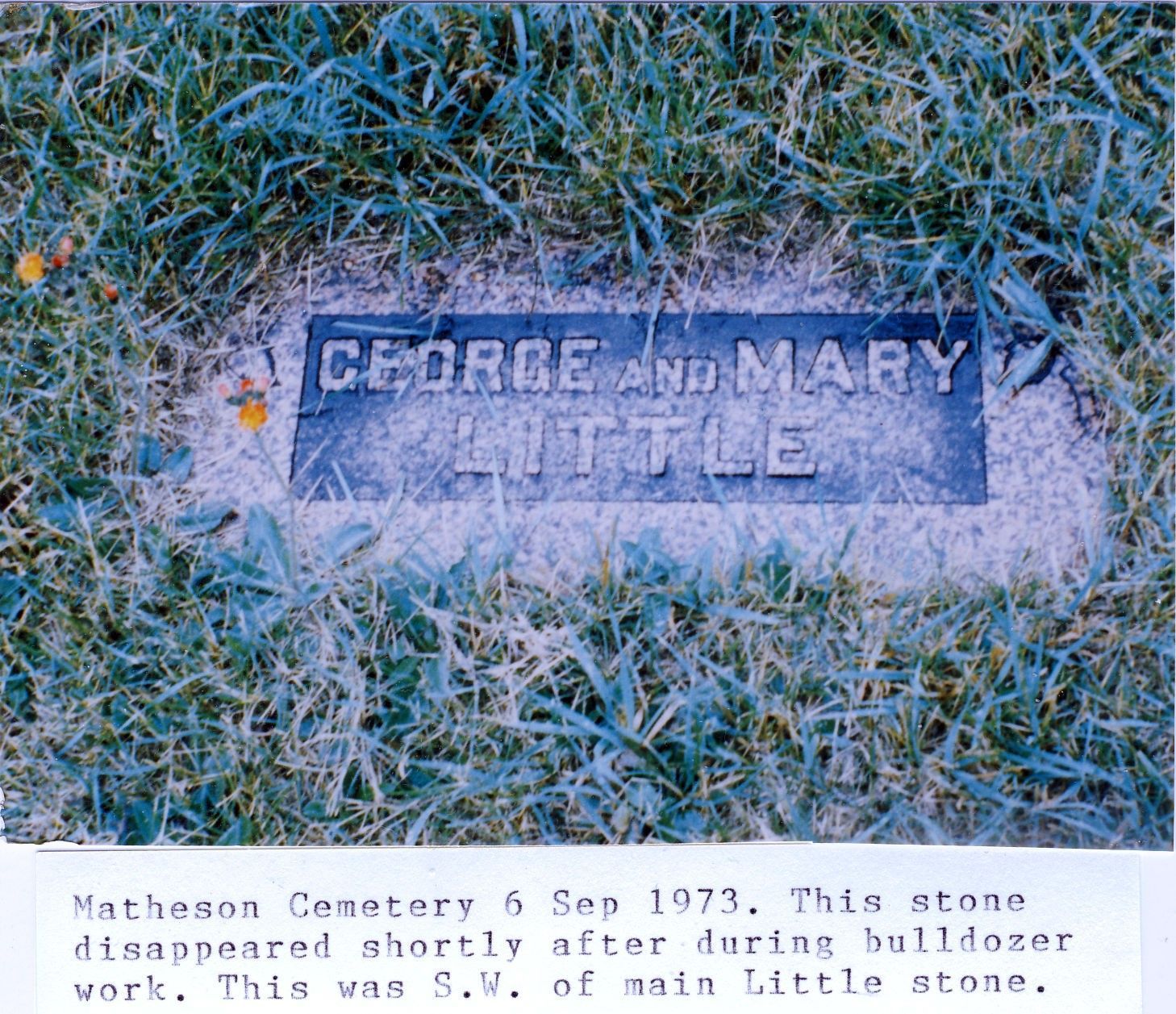
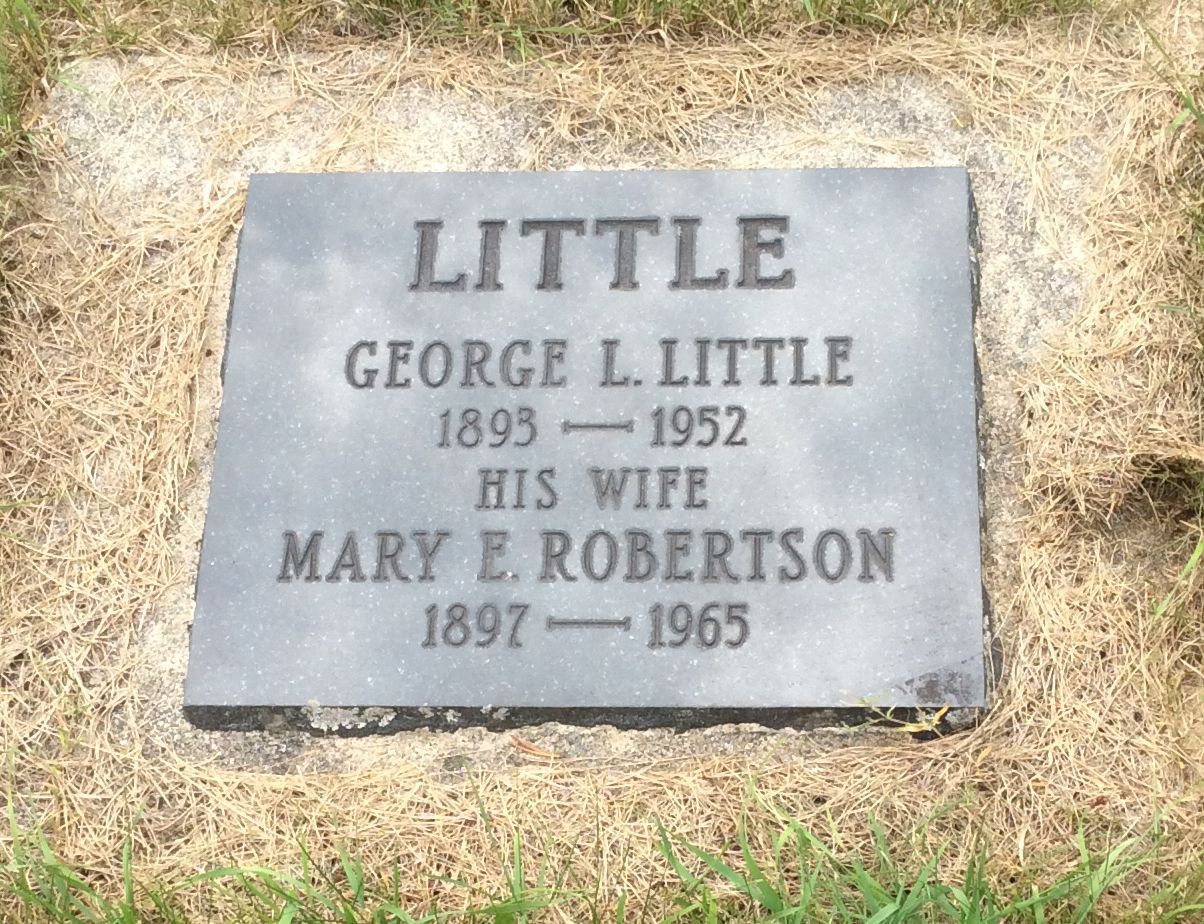
When Rick and I arrived at the cemetery in August of 2016, we found the monument showing the ravages of time with lichen growing on it. The two top pieces appear to be sliding off the base and the entire stone was at a tilt. It was impossible to get photos that don’t look like we were drunk!
Rick and I left some sunshine for these dear souls and also the promise that they would not be forgotten.
A hundred years later, this fire remains the deadliest in Canadian history. Our journey north was a deeply moving and personal experience. I left feeling that I had, at last, pieced together the most complete account I could of what likely transpired on that fateful day – July 29, 1916.


